After the dog photo last week, the cat demanded equal representation. Here is an undated photo of Martha Bradford in costume holding a substantial and apparently contented tabby.
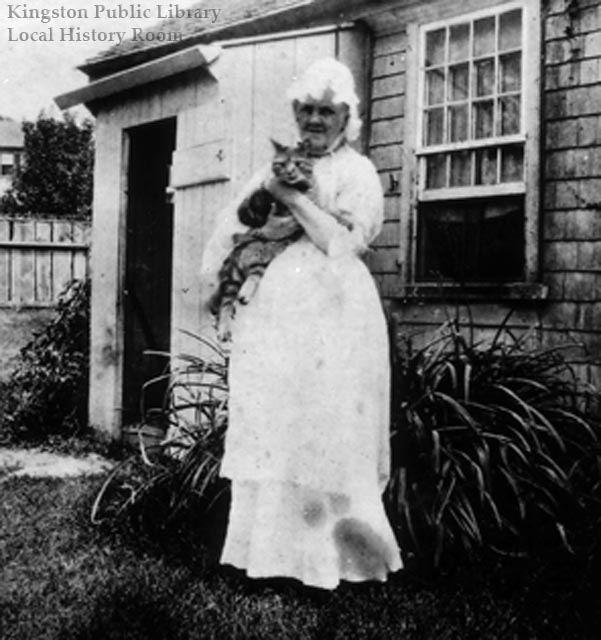
- Miss Martha Bradford and cat
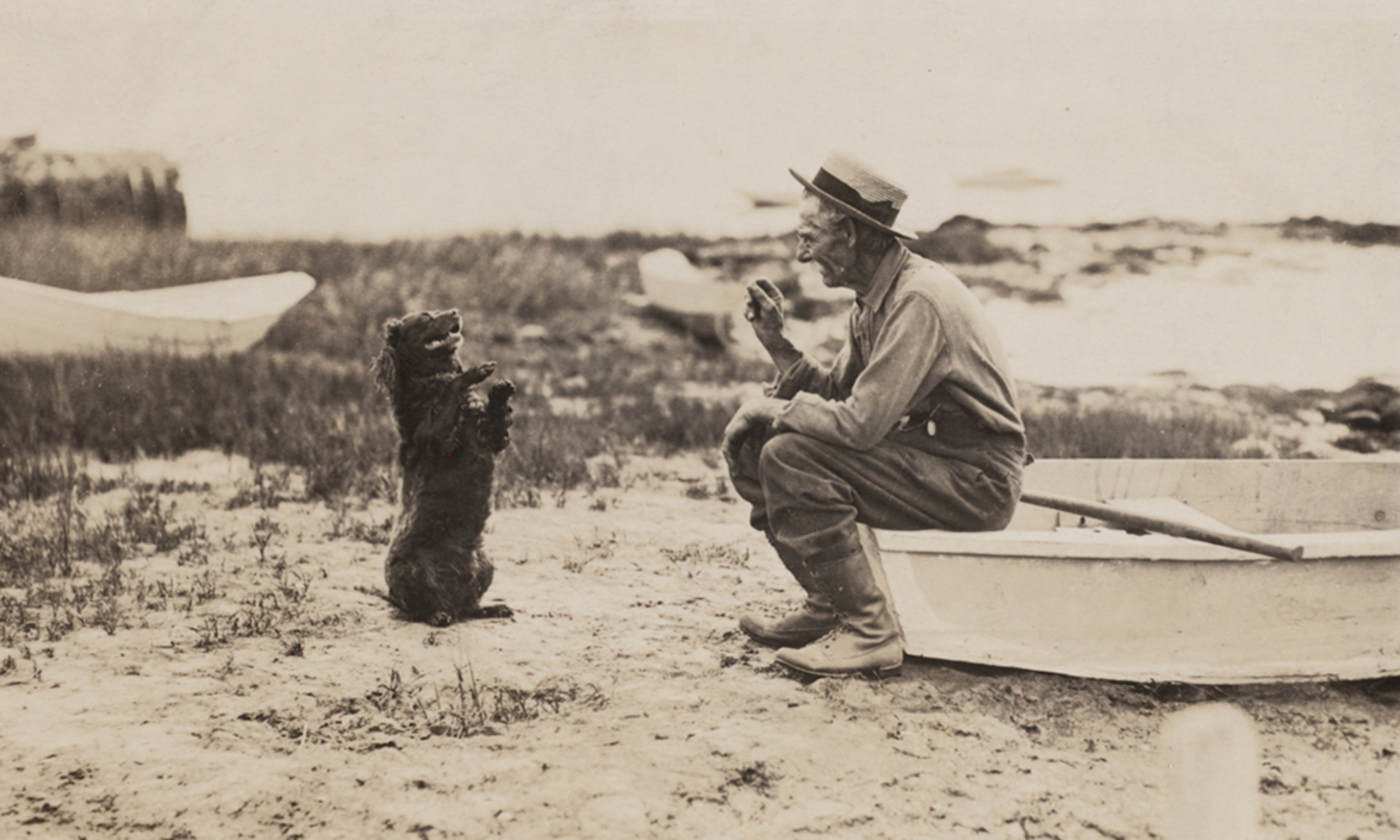
Kingston (Massachusetts) Public Library
This is one of those pictures that just jumps out at me. I don’t know too much about it, but I really like it. The caption simply reads “Chester Fuller and his dog near Delano’s Wharf, 1890.”
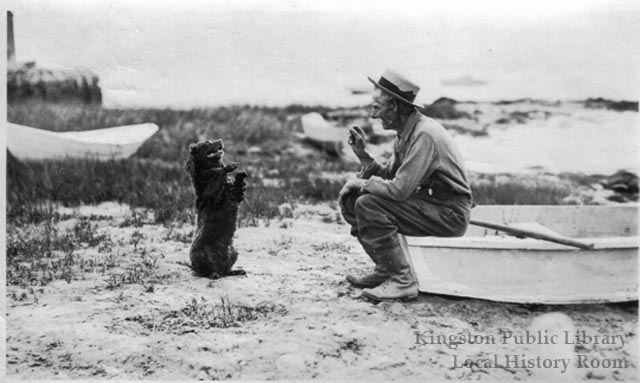
I wish my dog would sit up like that, but she’s knock-kneed and goofy so she just falls over.
Over the centuries, Kingston residents have served in the armed forces when necessary, and throughout that time, the town as a whole has honored that service and sacrifice. Here is a brief look at a few of the monuments around town that set in stone the town’s gratitude to its citizen soldiers.
The same spirit that led Kingston to gain independence from Plymouth in 1726 made the town ready to support opposition to British rule fifty years later. In the winter of 1775, Kingston selectmen joined other towns of Plymouth County in signing a remonstrance against the crown, and began to prepare for the crisis soon to come. Men were recruited for a company of “minute men” and when Lexington called, shipbuilders and farmers dropped their tools and marched first to Marshfield, then on to Concord. Kingston sent her full quota to the Continental Army — 61 men, half of the adult male population from a town whose residents numbered just over 900. The town also provided coats for these troops, and sent others to man the fort built in 1777 at the Gurnet alongside men from Duxbury and Plymouth.
Subsequent wars brought equal responses from the town’s citizens. In the War of 1812, 30 Kingston men enlisted, most serving coast guard duty at the Gurnet. With an economy heavily dependent on shipping and ship-building, Kingston’s prosperity was certainly threatened by this war with Britain, and citizen responded once more. In the War of the Rebellion, now more commonly called the Civil War, Kingston sent 189 soldiers to fight, 19 more than the required quota. Of a population of 1626, one in nine served; a total of 14 were casualties of the hostilities. The town treasury paid out more than $11,000 ($5,574 from private donations) in soldier’s relief.
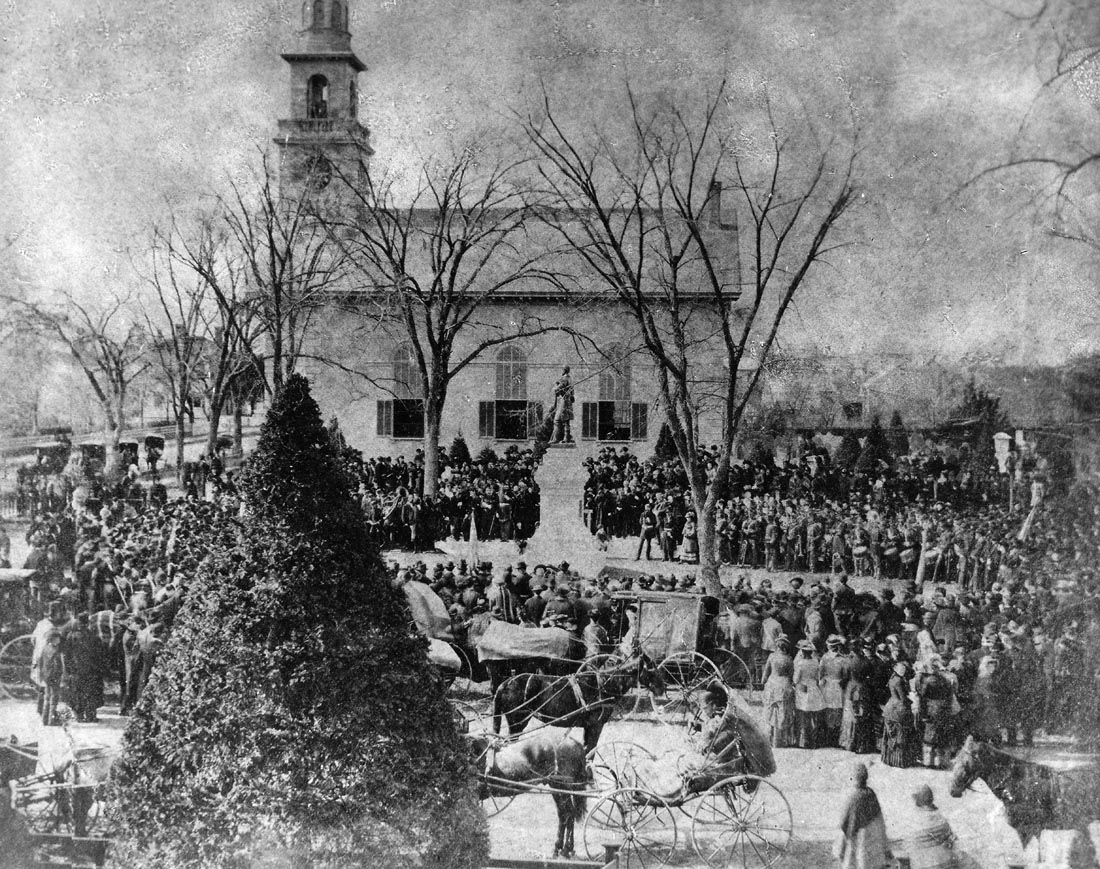
In 1883, a monument was raised on the Town Green, also known as the Training Ground, to honor those Kingstonians who fought for national unity. Mrs. Abigail Adams personally funded the monument, while the Martha Sever Post No. 154 of the Grand Army of the Republic paid for the dedication ceremonies, pictured below.
In 1926, the town honored the 132 doughboys and nurses who fought in World War I with a monument on Patuxet Hill, at the intersection of Green and Summer Streets; the formal dedication took place on Memorial Day, May 30, the following year. The machine guns were donated by the Kingston American Legion.
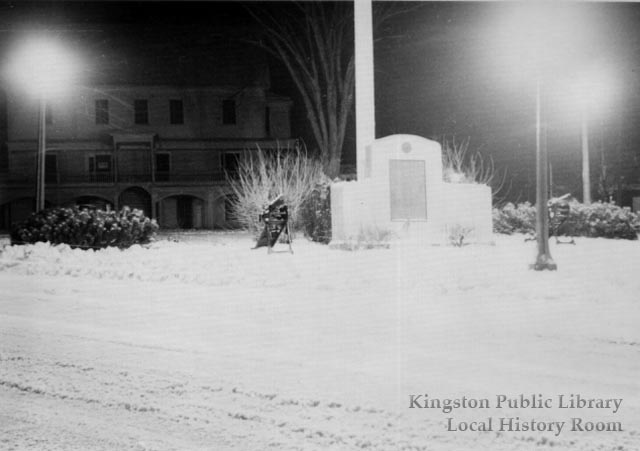
The monument to those who served in the Second World War was erected in 1953 on Main Street near the bypass over Route 3. Another memorial to veterans of foreign wars, specifically Korea and Vietnam, stands in front of the Faunce School on Green Street, while the newest Kingston monument, this one honoring soldiers missing in action, was dedicated at Gray’s Beach on Patriot’s Day, 2005. Life Scout Joe Gibbons spent a year on the project.
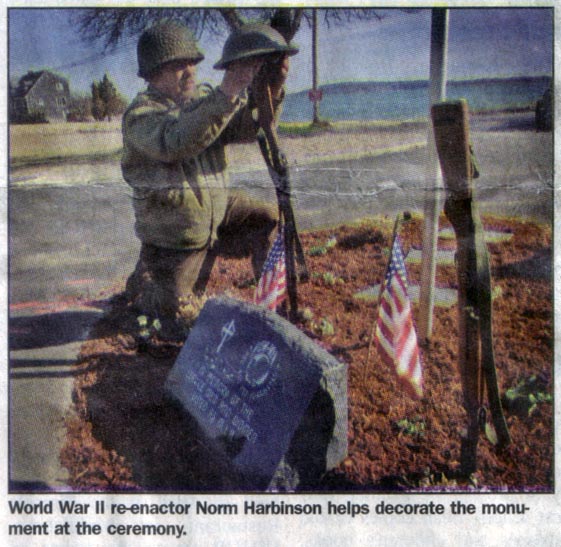
With the presidential election upon us, we look back some decades to another. Here is the 1864 National Republican Ticket.
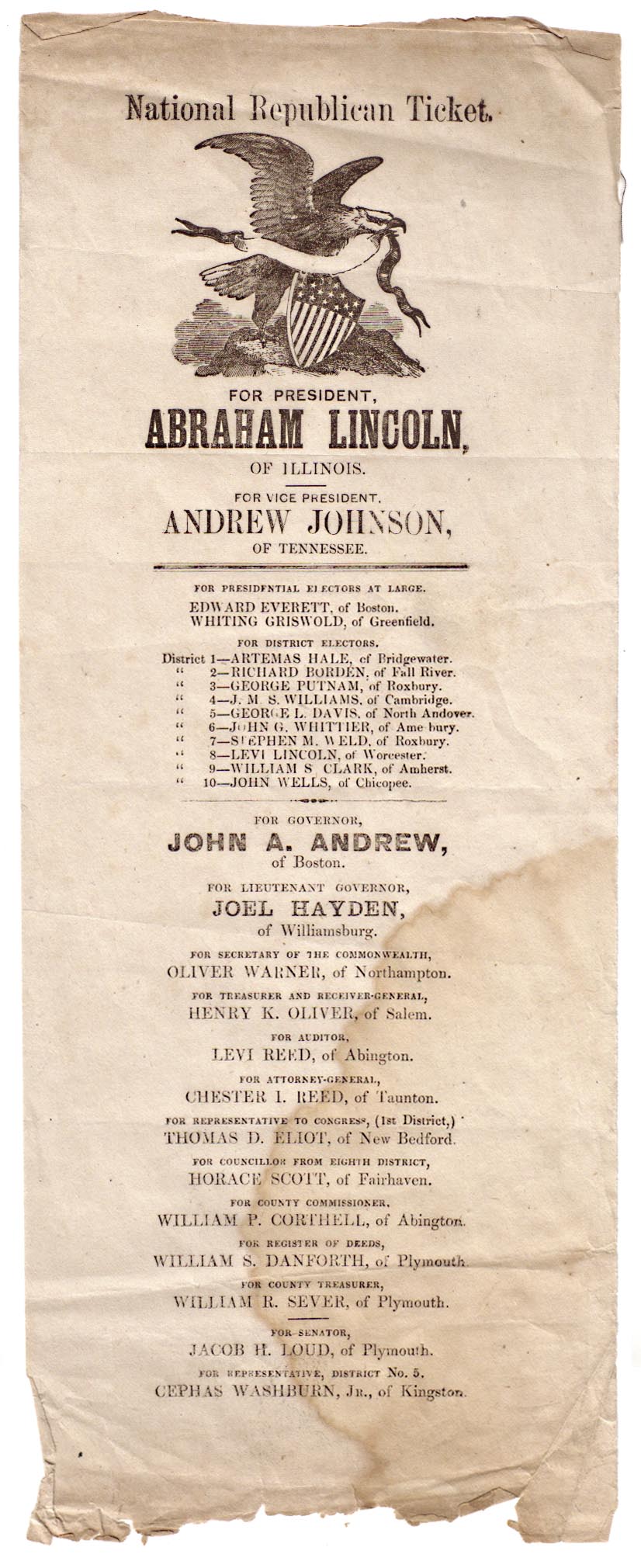
Running for re-election against General George B. McClellan, a War Democrat known as “Little Mac,” on a platform that included the defeat of the Confederacy and a constitutional amendment to end slavery, Lincoln received 55% of the popular vote and 212 electoral college votes of the possible 233. For background and details on the 1864 election, go here or here.
Below the national candidates, we see John Albion Andrews, called the “Great War-Governor,” also running for a second term. Unlike Lincoln, Andrews did not win. To learn more about this notable Massachusetts governor, go here.
The Kingston connection lies at the very bottom: Cephas Washburn, Jr. of Kingston running for Representative of District No. 5. Did he win? Well, in 1864, election results were slow to get out to the public, so stay tuned for the results, which we’ll post after the elections.
Update: There is no record that Cephas Washburn Jr. won his election.
Source: Vertical Files Collection: “Washburn Family.”
Football Champions
This group portrait shows some of the 1933 South Shore Champion Football Team of Kingston High School on the football field at the Bailey Playground (note the goal post in the background). Twenty-eight boys, out of a total student body of 131 in Grades 9-12, went out for football that year. The new principal Mr. Gotschall supervised the football team (and the boys basketball team) in addition to his administrative duties. Under the principal’s leadership, this small, inexperienced team won five games, lost two and tied one to capture the championship. And as icing on the cake, the football games cleared a profit of $70.33; along with money from magazine sales and gifts, the school’s athletic and lunchroom bills were paid in full.
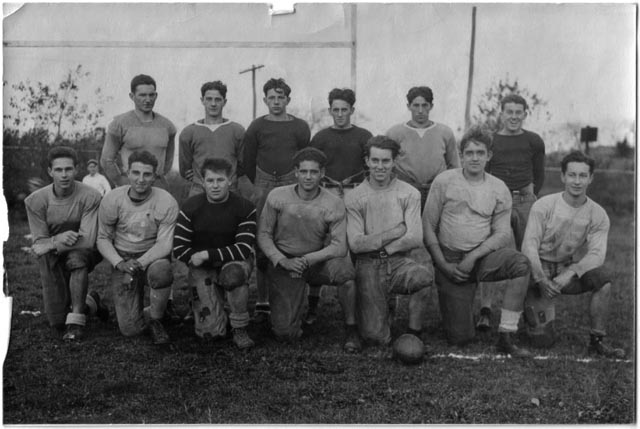
Front row (kneeling): Bob Bailey, Raoul Corrazari, George Candini, Clyde Mills, Eddie Cadwell, Stephen Reed, Bob Davis. Second row: Malcolm “Mac” Peterson, Alfred Bruneau, Harold “Slim” Alberghini, Chester “Chet” Morrison, Amelio Ruffini, Russell “Prout” Prouty.
Note the equipment that would never meet today’s safety standards.
Happy Helen Foster Day!
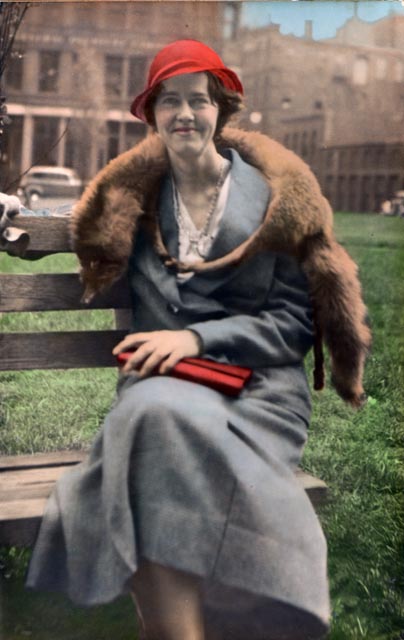
September 24 marks the birthday of one of Kingston’s notables, Helen Foster. Born in 1900, she studied art extensively and eventually became the first female commercial artist in Boston. She lent her talents to her hometown, designing the town seal and town quilt, collaborating on the town flag, and serving on the Council on Aging. For more on Helen’s life, click here for the biography written for the Kingston Arts Festival “Past Masters” exhibit, which featured Helen’s work.
One of the LHR’s long-term, part-time assistant amateur archivists, who knows Helen only through indexing the extensive diaries Helen kept throughout her life, had this to say:
She was very deep, an exceptional woman. Her description of the world she saw is an explosion of detail and color. I can see from just her words the fields of her childhood, every flower, tree and rock. When she writes about the spontaneous parade she saw at the end of World War I, the soldiers march off the pages and the flags fly high. I am always moved by her words. What an amazing, talented artist.
This kind of connection — getting to know someone you never had the chance to meet in real life — is one of the special things about a local history collection as rich as ours.